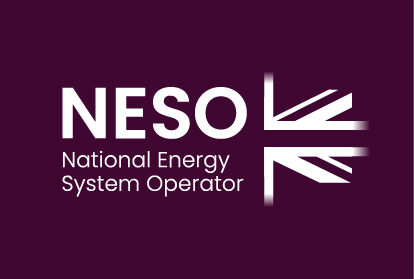Digitalisation and data sharing are critical enablers to the achievement of net zero. This project will be developing a Pilot for the Data Sharing Infrastructure (DSI), by bringing together expertise from the ESO, project partners and the National Digital Twin Programme. The project will develop the DSI capability and demonstrate whether or not it can support scalable data sharing through an outage planning use case. The pilot is an important phase in developing the wider objective of the VirtualES and will leverage expertise from previous project stages to create a working pilot to demonstrate the technology.
Benefits
Previous work on the technical alignment between VirtualES, the National Digital Twin Programme and related energy sector programmes including Open Energy allowed the preceding projects to reduce duplication and enhance interoperability while preparing for this pilot phase. The Alpha phase of this project, NIA2_NGESO065, (Nov-22 to July 23) created a standardised approach to how a benefit analysis is undertaken across the VirtualES use cases and considers the following benefit categories, improved system operability and resilience, reduced carbon emissions, reduced consumer bills and other wider benefits.
The pilot use case, and the other use cases being developed in the wider VirtualES programme, would individually and jointly deliver benefits to the energy system including greater system operability and resilience; reduced greenhouse gas emissions; and reduced consumer bills. If successful, the pilot is expected to prove the technical credibility of sharing data using this scalable data sharing infrastructure (DSI) model and enable further use cases to be delivered using the DSI.
Learnings
Outcomes
The DSI Pilot project has effectively achieved its objectives, positioning the overarching programme for success as it transitions to the next phase of developing a Minimum Viable Product.
The design and development in the Pilot has delivered a proof of concept for the DSI, enabling end-to-end testing of the technical user journey with Network Partners. As expected for a PoC, the Pilot phase solution is complex and required repeated manual interactions. This PoC offered crucial insights into the DSI's conceptual model, helping to reduce risks in future development.
Working directly with Network Partners has meant the DSI Pilot has collected a wealth of user feedback that can be used in future phases to understand needs and prioritise features for development. This includes a more detailed understanding of the varied deployment models that will be required to maximise adoption based on organisational architectural preferences and capabilities.
The use of the DSI Pilot solution has provided insight of the future needs to achieve scalable, secure and assured data sharing. The approach used with DPNs deployed within organisations and a DSM responsible for authentication and governance has been demonstrated as a functional solution. The experience from the Pilot will be reflected in future development to prioritise the ability to scale both by number of participating organisations and by number of available data products. This will necessitate developing a solution that is adoptable and resilient.
The project has also provided an opportunity to test the proposed approaches to boundary definition and model development to support the implementation of Grid Code modification 139 and the Long Term Development Statement modelling processes. This learning has been shared with the relevant programme teams and additional information is included in the project documentation shared on Smarter Networks and neso.energy.
Lessons Learnt
The DSI Pilot project has provided crucial insights to support the future development of the Data Sharing Infrastructure. Additionally, there are lessons that can be applied to broader future innovation projects. The project reports examine these in greater detail and will be shared on Smarter Networks and https://www.neso.energy/about/innovation/our-innovation-projects#Complete-Projects.
The project underscored the importance of hands-on Proof of Concept testing and iterative capability development based on user requirements. Involvement by Network Partners offered invaluable opportunities for testing and feedback collection. Establishing project collaboration entailed a complex contracting process; the learning from this process will be carried forward by NESO's innovation and procurement teams and Network Partners to facilitate future phases and enhance collaboration efficiency.
The learning and recommendations from the project are documented in the DSI Pilot Trials report which will be shared on Smarter Networks and https://www.neso.energy/about/innovation/our-innovation-projects#Complete-Projects.
1. Use learning from Pilot trials to assess the DPN design for further development.
Engage with future DSI use cases to re-validate and test the DPN concept alongside the technical solution design of the DPN PoC against industry needs and identifying the DPN minimum infrastructure layer.
2. Use learning from Pilot trials to assess the DSM design for further development.
Engage with legal and process design experts and key industry stakeholders to consider how the DSM PoC needs to evolve.
3. Develop a comprehensive source of documentation to support participation and development of the DSI
Bring together current DSI documentation into a live repository openly available to prospective DSI participants.
4. Prioritise the core requirements to support data sharing over detailed definition of individual use cases
Engage with future industry use cases of the DSI to understand data sharing requirements and prioritise appropriate data exchange solutions.
5. Encourage data standardisation
Support future industry use case participants to address data standardisation by developing a use case development framework with guidance to support data standardisation and formalising the description of a Use Case Lead role, i.e. relevant industry actor able to broker necessary agreements across use case participants.
6. Continue to prioritise DSI value creation
Engage with industry and upcoming DSI use cases to understand what are the core functionalities providing most value overall.
7. Continue to reduce adoption barriers by improving usability Address identified key barriers and keep engaging with users to test further adoption needs.




